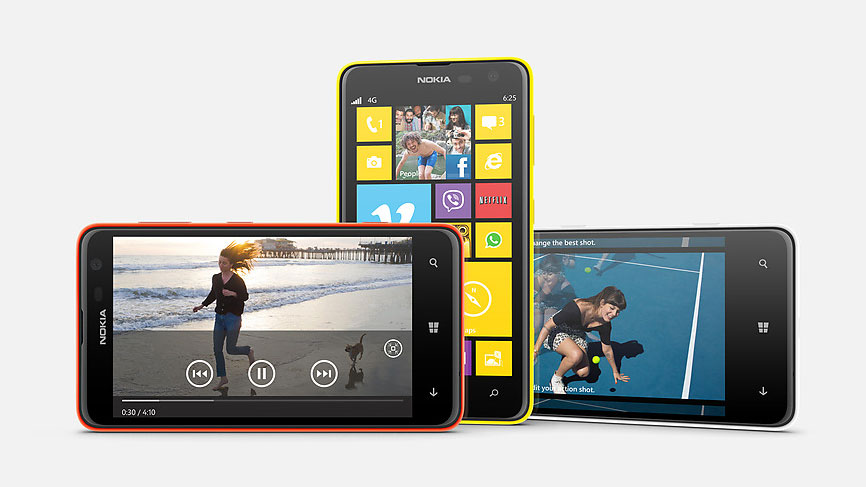Why you can trust TechRadar
Just like every other recent Lumia handset the Nokia Lumia 625 runs Windows Phone 8, now upgradeable to Windows Phone 8.1. We've covered it plenty of times before in other reviews and even reviewed it in its own right, so we won't get too bogged down in detail, but at its heart it's a solid, slick operating system.
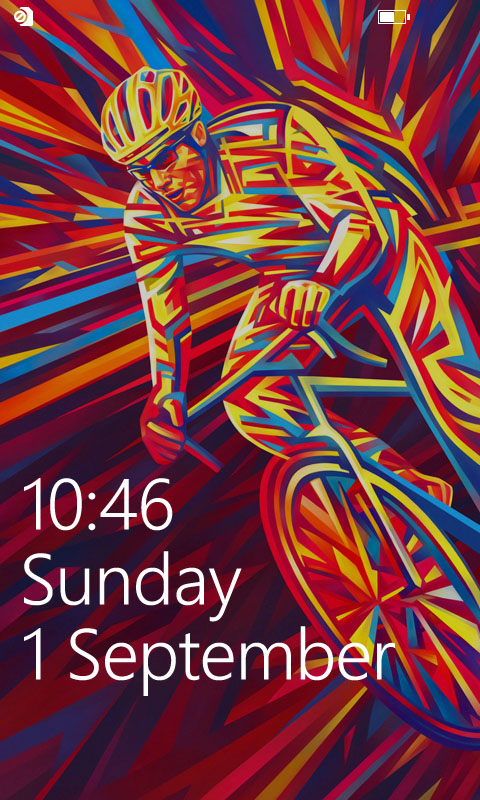
The first screen you'll come to is the lock screen, which displays the time and date, along with notifications and a background wallpaper. Swipe that away and you'll reach the start screen.
The tile-based interface here makes Windows Phone 8 visually attractive and distinct from Apple and Android handsets. You can easily resize, move or remove tiles with a long press, and many of them are 'live tiles' which display additional information or images.
For example a weather tile might display the temperature in your current location while an email tile would tell you how many unread messages you have.
It's an attractive and simple way to easily keep on top of things right from your start screen without having to launch multiple apps.
Aside from tapping and swiping, the other thing you'll be doing regularly is interacting with the three soft touch buttons below the screen.
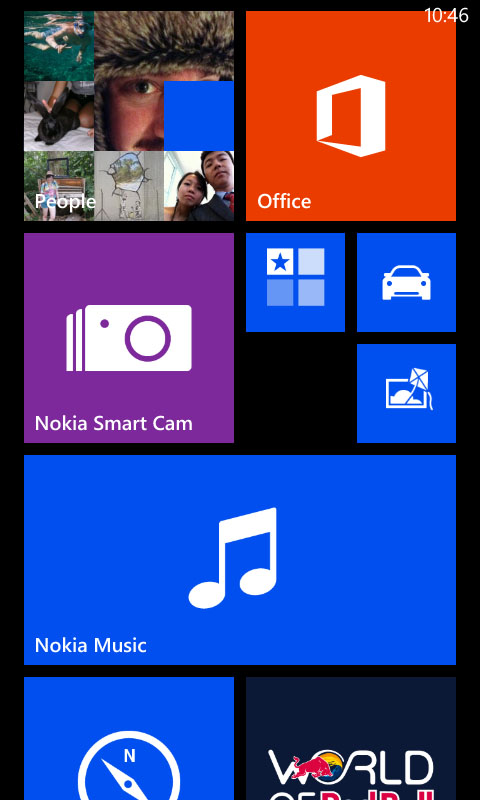
The back button is to the left and that just cycles back to whichever screen you were on last. The start button in the middle will take you back to the start screen, and the search button to the right will launch Bing search.
Two of those buttons, however, also have a secondary use. If you long-press the back button it will bring up a list of all your open apps and recently viewed screens, letting you tap one to quickly return to it.
While a long press of the start button will launch a voice-based personal assistant, which can be used to call or text a contact, for example, open the calendar or perform an internet search, and it works pretty well too.
A swipe to the right shows you every app installed on the phone, whether it has a start screen tile or not, and from there you can just tap to launch something or long press it to pin it to the start screen.
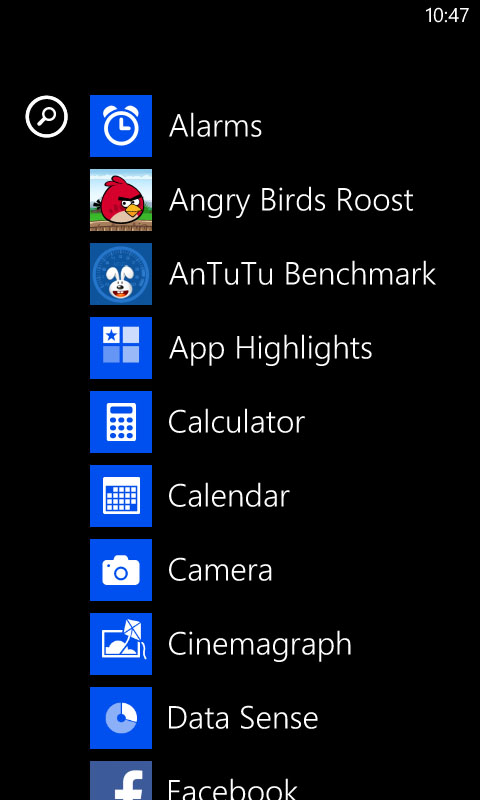
From here you can also access the settings screen which has all the standard Windows Phone 8 options such as ringtones and sounds, screen brightness and connectivity options.
There are also a few useful tools buried here, such as 'data sense', which helps you manage your data use and can be toggled to restrict background data once you near your data limit.
Then there's Kid's Corner, which lets you set up a child-friendly mode on the phone, limiting the things that they have access to.
You can also change the Nokia Lumia 625's colour scheme and lock screen wallpaper from the settings screen.
It's all very intuitive and well laid out, with separate tabs for system settings and application settings. Our one real issue with it, which is the same on all Windows Phone 8 handsets, is that some things are a little more buried than we'd like.
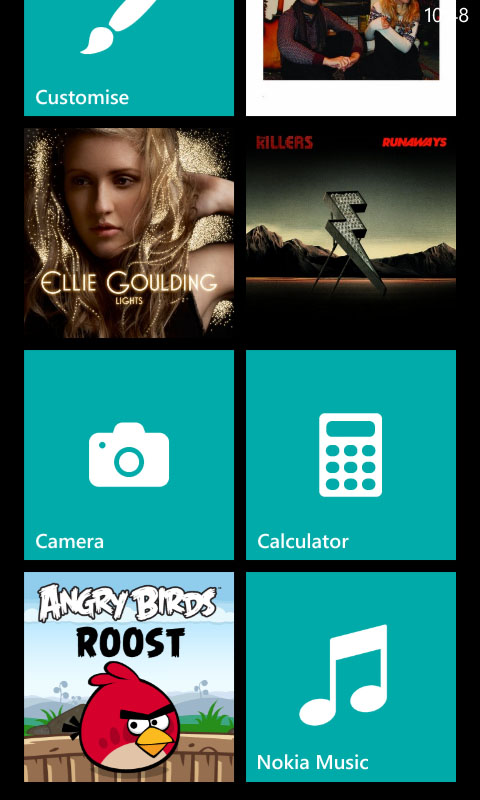
For example, we tend to regularly turn things like 3G and Bluetooth on and off, so it would be nice to be able to toggle them from the main screen much as you can from the notifications shade on Android.
But with Windows Phone 8 you have to dive into the main settings screen. Similarly if you want to know how much battery you have left there is an indicator that you can view by tapping the top of the start screen, but it's just a little bar and isn't very precise, to get an actual percentage you once again have to head to the settings screen.
Thankfully this issue is solved with the Windows Phone 8.1 update, which adds Action Center to the mix. Just pull down from the top of the screen and you'll be able to see notifications and access quick settings toggles, just like on Android.
The other big update in Windows Phone 8.1 is Cortana, a personal assistant to rival Google Now and Siri. It lets you carry out searches and tasks with voice commands and for the most part it works pretty well, though as with all such things a thick accent or noisy environment can throw it off a bit.
Windows Phone 8.1 also brings other small updates, such as folders and custom volume settings. They're relatively minor features but appreciated none the less.
Despite being a fairly low-end phone the Nokia Lumia 625 can handle general operation with ease, as is normally the case with Windows Phone 8 handsets. You can glide around the screens with no slowdown and the screen itself is very responsive to the touch.
We wish the screen was higher resolution, but for the main screens of the phone it's not such a problem, as it really only becomes an issue when watching videos or reading a lot of text.
The screen does seem perhaps a little washed out, though that can be remedied a little by adjusting the colour profile in the settings screen, and it has good viewing angles so you don't need to be square on to use it.
James is a freelance phones, tablets and wearables writer and sub-editor at TechRadar. He has a love for everything ‘smart’, from watches to lights, and can often be found arguing with AI assistants or drowning in the latest apps. James also contributes to 3G.co.uk, 4G.co.uk and 5G.co.uk and has written for T3, Digital Camera World, Clarity Media and others, with work on the web, in print and on TV.
